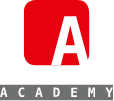Click here to download the paper.
The study evaluated the use of the Nd:YAG laser in lipolysis and laser-assisted liposuction procedures. This laser source was a pioneering wavelength in lipolysis and has been evaluated in numerous clinical studies, with thousands of satisfied patients having undergone Nd:YAG-based lipolysis procedures. The paper gives a detailed breakdown and analysis of the basic physics and working mechanisms underlying laser lipolysis. Using a Monte Carlo computer simulation, the research team investigated wavelength dependence and its effects on treatment efficiency and safety. Important findings were that the 1064 nm Nd:YAG laser exhibits the largest directly heated volume of subcutaneous tissue and demonstrates the least amount of undesirable thermal effects on neighboring dermal tissues, compared to other applicable wavelengths. In addition, its Quasi Continious Wave mode of operation shows a significantly higher ability to coagulate subcutaneous blood vessels compared to Continuous Wave diode lasers. The team concludes that the 1064 nm, Nd:YAG laser source, combined with the highest performance characteristics and treatment versatility offered by the latest and most advanced laser systems, is the modality of choice in body shaping procedures.


